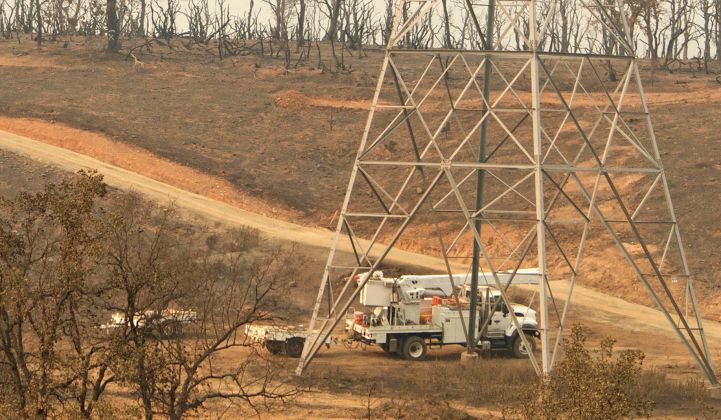California utility Pacific Gas & Electric said it will honor all existing power-purchase agreements in a forthcoming plan to reorganize and emerge from bankruptcy.
Whether or not legacy power contracts would survive has been a hot topic within power industry circles since the utility's role in deadly wildfires sent the company into bankruptcy. PG&E has committed to power contracts totaling $42 billion, most of which come from renewable power plants. Early deals with wind and solar developers now carry a significant premium compared to today's market, so backing out of the contracts held the potential to save PG&E billions of dollars.
Dropping the contracts would also send a shockwave through the renewables industry, particularly affecting the renewable energy units of Consolidated Edison, Berkshire Hathaway and NextEra Energy, but also threatening California's legislative mandate to decarbonize the electric grid.
A court filing from August 6 suggests that potential outcome will not happen. The new debtor's plan would see PG&E raise money from existing shareholders and securitized bonds to pay out wildfire victims, creditors and obligations to employees, while standing behind its power-purchase agreements, all apparently without raising electricity rates for customers, S&P reported.
"We want to be clear, we will not propose to reject these agreements as part of our plan of reorganization," PG&E spokesperson Lynsey Paulo told S&P.
That could put some fears to rest, although the plan has not been finalized and could still change. It also leaves open the possibility of "voluntary modification" of contracts by the counterparty, which has already happened.
Canadian Solar subsidiary Recurrent Energy took a voluntary pay cut of 10 percent on three solar projects, Reuters reported. Hummingbird Energy Storage and mNOC took the same cut on their energy storage contracts, part of the Moss Landing portfolio to provide cleaner alternatives to gas peaking capacity in the South Bay region.
The California Public Utilities Commission approved the Moss Landing portfolio two months before PG&E filed for bankruptcy. Originally, mNOC was supposed to get 10 megawatts/40 megawatt-hours online by October 2019, while Hummingbird had until December 2020 to build 75 megawatts/300 megawatt-hours.
Uncertainty around PG&E's intentions toward its contracts makes it hard for developers to secure financing and break ground on the new projects. Though many of PG&E's existing contracts have been operating for years, those that cut a deal with the utility are still in development. These developers opted to trade a fraction of their project value for certainty that their customer would accept it at all. The utility expects to save $20 million from the five renegotiations, Reuters noted.
It remains to be seen whether PG&E can shake some more loose change out of its other contracts, or if all the other developers will get to keep them intact.




